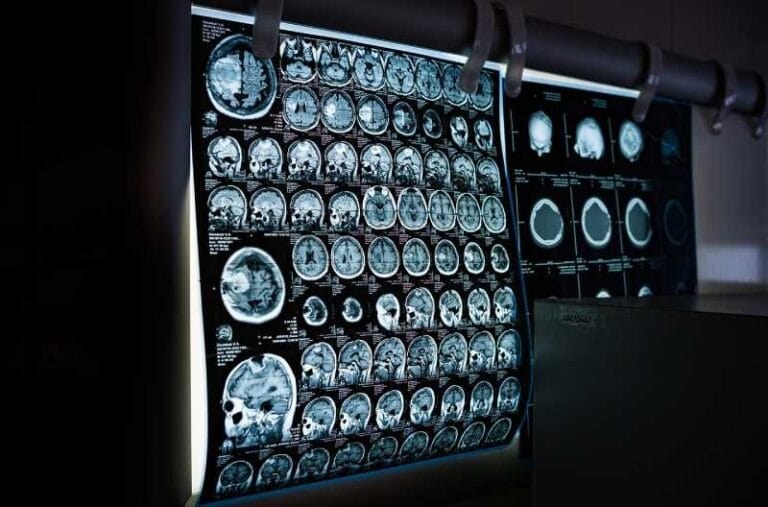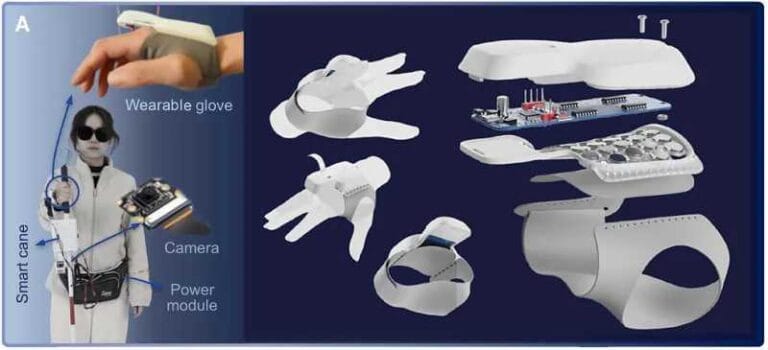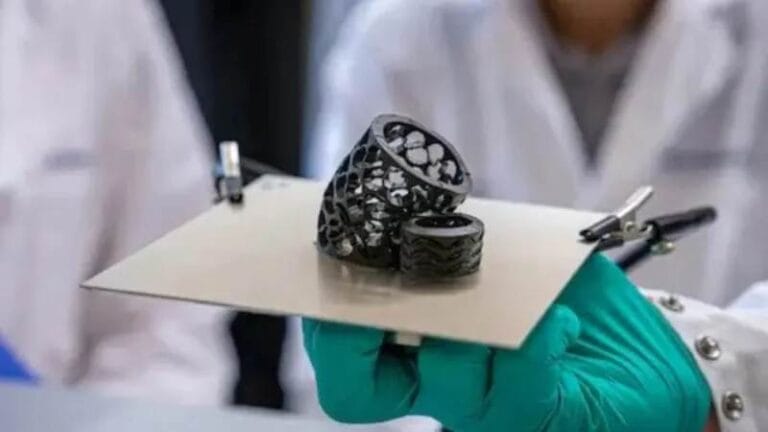Japanese scientists create living robot skin

Researchers at the University of Tokyo have developed a groundbreaking method to bind engineered skin tissue to the complex forms of humanoid robots. This innovation, led by Professor Shoji Takeuchi, offers significant advancements for robotic platforms, including increased mobility, self-healing capabilities, embedded sensing abilities, and a more lifelike appearance.
Inspired by the ligaments in human skin, Takeuchi’s team incorporated special perforations in a robot’s face to help a layer of skin adhere more effectively. This technique could have applications in the cosmetics industry and in training plastic surgeons. Professor Takeuchi, a pioneer in biohybrid robotics, has led his Biohybrid Systems Laboratory to create mini robots using biological muscle tissue, 3D printed lab-grown meat, and engineered skin that can heal itself. His drive to improve the properties and capabilities of robotic skin emerged from earlier research on a finger-shaped robot covered in lab-grown skin.
“During previous research on a finger-shaped robot covered in engineered skin tissue we grew in our lab, I felt the need for better adhesion between the robotic features and the subcutaneous structure of the skin,” said Takeuchi.
The new method mimics human skin-ligament structures by using specially designed V-shaped perforations in solid materials. “By mimicking human skin-ligament structures and by using specially made V-shaped perforations in solid materials, we found a way to bind skin to complex structures. The natural flexibility of the skin and the strong method of adhesion mean the skin can move with the mechanical components of the robot without tearing or peeling away.”
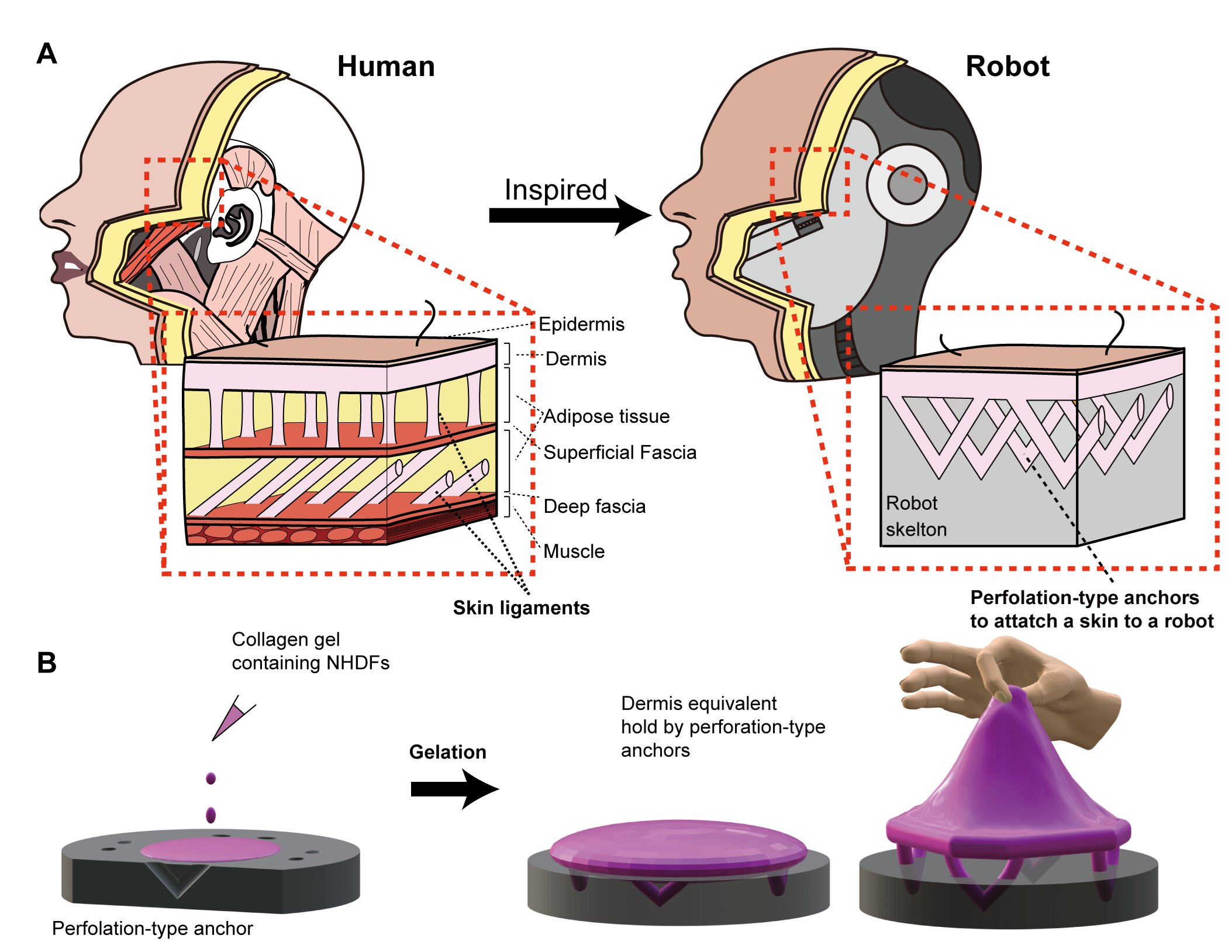
Previous methods involved mini anchors or hooks, which were limited in their application and could cause damage during motion. The team’s innovative use of perforations enables skin application to almost any surface shape.
A key element of this technique is the use of a special collagen gel for adhesion. Collagen’s natural viscosity made it challenging to feed into the tiny perforations, but the team overcame this by using plasma treatment, a common technique for plastic adhesion. This process facilitated the collagen’s integration into the perforations, securing the skin closely to the robotic surface.
Takeuchi emphasized the difficulties in manipulating soft, wet biological tissues during development, highlighting the necessity of maintaining sterility to prevent bacterial contamination. “Manipulating soft, wet biological tissues during the development process is much harder than people outside the field might think. For instance, if sterility is not maintained, bacteria can enter and the tissue will die,” said Takeuchi. The successful binding of living skin to robots opens up possibilities for robots with self-healing skin that repairs minor lacerations naturally, much like human skin. Additionally, nerves and other skin organs can be integrated for enhanced sensing capabilities.
“However, now that we can do this, living skin can bring a range of new abilities to robots. Self-healing is a big deal—some chemical-based materials can be made to heal themselves, but they require triggers such as heat, pressure or other signals, and they also do not proliferate like cells. Biological skin repairs minor lacerations as ours does, and nerves and other skin organs can be added for use in sensing and so on.”
Beyond proving the feasibility of this method, Takeuchi and his team have practical goals. They envision applications in medical research, such as developing “face-on-a-chip” models for studying skin aging, cosmetics, surgical procedures, and plastic surgery. Embedded sensors could enhance robots’ environmental awareness and interactive capabilities.
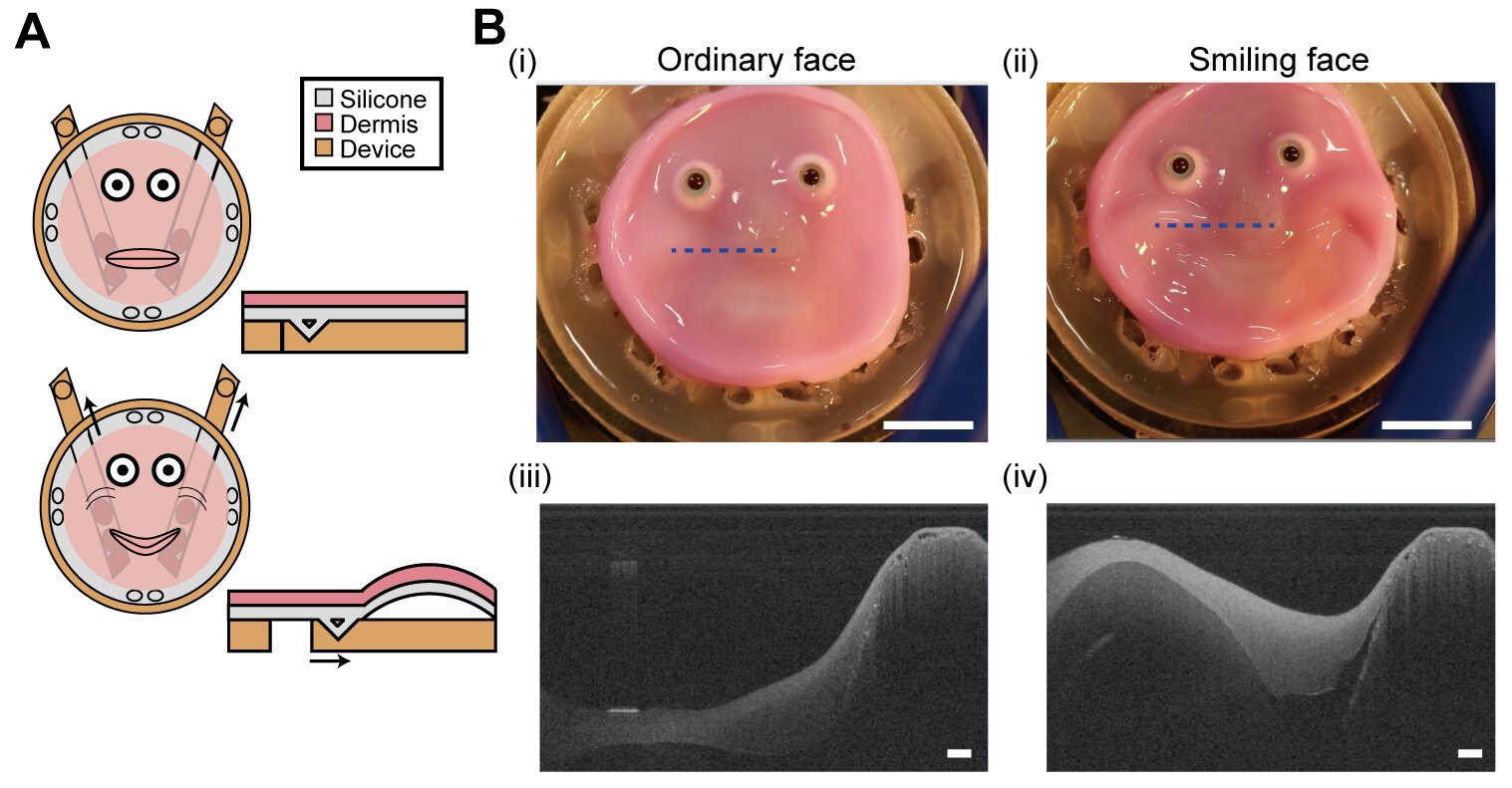
“In this study, we managed to replicate human appearance to some extent by creating a face with the same surface material and structure as humans,” said Takeuchi.
“Additionally, through this research, we identified new challenges, such as the necessity for surface wrinkles and a thicker epidermis to achieve a more humanlike appearance. We believe that creating a thicker and more realistic skin can be achieved by incorporating sweat glands, sebaceous glands, pores, blood vessels, fat and nerves.
“Of course, movement is also a crucial factor, not just the material, so another important challenge is creating humanlike expressions by integrating sophisticated actuators, or muscles, inside the robot. Creating robots that can heal themselves, sense their environment more accurately and perform tasks with humanlike dexterity is incredibly motivating.”
Japanese scientists have made significant strides in creating living skin that can be attached to robotic surfaces, showcasing a realistic—if somewhat unsettling—smile. This breakthrough was published in the journal Cell Reports Physical Science and includes a video demonstration of the skin being stretched into a smile.
Using a “skin-forming cell-laden gel,” the researchers developed a robot covered with living skin, moving away from traditional silicone rubber skin that cannot sweat or heal itself. The new material aims to endow robots with the self-healing capabilities of biological skin, although achieving full functionality remains a future challenge.
In previous studies, the team demonstrated the ability to repair lab-grown skin covering a robotic finger by grafting collagen onto a cut. However, conducting similar repair tests on their smiling robotic skin is an upcoming objective.
To create a “natural smile,” the team gelatinized the skin-like tissue and fixed it inside the robot’s perforations, drawing inspiration from the structure of human skin ligaments. This innovative approach marks a significant step toward developing androids with human-like appearances and abilities.



